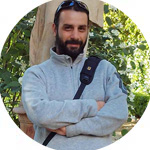Over a decade ago, I used to have a nine-to-five job working as an HR manager. My daily routine was very repetitive. I’d commute to work, do the same tasks in my cubicle, and head back home in the evening. Rinse and repeat the next day until the weekend came.
It all changed when I left the corporate world and became a photographer.
Nowadays, when people learn about my job, one of the first questions they ask is “Do you just walk around and take photos all day?”
I wish it were that simple!
There’s a lot more that goes into the day of a photographer and taking photos is only a small part of it. There is also no typical day; my routine can vary depending on what type of photography I do, and every project is unique, involving a lot of work before and after the photo session.
So, let’s take a look at some of the things I do as a professional photographer:
Researching Projects
As an artist, I wish I could say that inspiration randomly strikes and that every click on the shutter button leads to a money shot.
In reality, there’s a lot of preparation that is done before even thinking about grabbing the camera.
As a travel photographer, I have to research the location I’m traveling to. I find a guide and the best areas to photograph. I even study a few basic foreign words to open doors and make my subjects feel comfortable.
As a stock photographer, I research what’s trending at the moment and plan the photoshoot so I can have my photos ready and uploaded in a timely manner.
As a fine art photographer, I spend a lot of time browsing other artists’ work to find inspiration and spark new ideas.
Photographing Projects
This is the obvious one. After carefully preparing my photo session, I spend the day photographing my subjects and projects.
But this doesn’t mean showing up, clicking on a shutter button, and wrapping it up. I need to select the right equipment, surroundings, and lighting for the session.
I capture as many photos as I can so I return home with a large collection of images to pick from for the next step.
Editing Photos
After the photo session, I usually end up with hundreds of images to go through. I make sure everything is backed up on the spot and start the culling process.
The truth is the majority of these photos will not be selected and only a few dozen (or less) will be kept.
Once the selection process is done, I edit every image according to my style or the client’s vision. I adjust the exposure, contrast, and colors and follow my usual workflow to create strong, saleable images.
Next, I make sure everything is properly titled and keyworded and include my copyright information in the metadata.
The final step is uploading the images to the relevant websites or sending them to the client directly. The remaining photos are backed up in multiple locations to avoid any future loss.
Accounting Work
This doesn’t sound exciting at all, but as a freelance photographer, I have to do most of the accounting work as well.
Once my projects are done and uploaded, I have to send and keep track of my invoices and follow up with the clients for any further requests and payment.
I also spend time organizing all my paperwork and scanning copies of all my receipts to file my taxes on time.
Marketing and Networking
A photographer who is not marketing himself is a photographer who is not selling anything.
This might not apply to stock photography, but marketing and social media is a step that can’t be overlooked with most of my work.
When I don’t have any photography projects going on, I work on my website’s SEO (search engine optimization) to increase my visibility, write articles and blog posts, and improve my social media presence on different platforms to network with potential clients and connect with the creative community.
Maintenance and Backing Up
The success of my photography business relies on my skills, but it also relies on my gear and the large collection of images I have acquired during my travels.
To avoid losing any data to a disk failure or theft, I regularly backup my images on different drives that I keep in separate locations.
I also make sure my gear is cleaned, my batteries are charged, and my memory cards are formatted and ready to be used.
In the end, being a professional photographer is quite a busy job. I do love the fact that every day is different. It’s also incredibly rewarding when you get those great shots and end up with happy clients.


